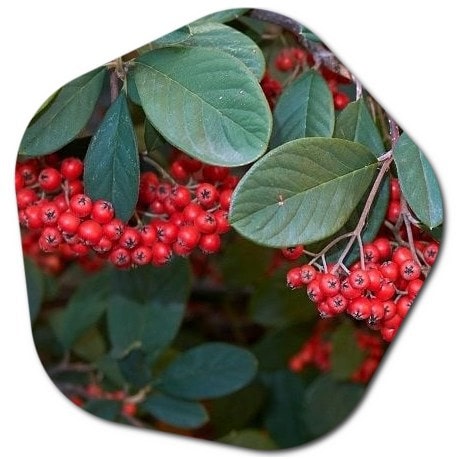What is the use of Cotoneaster franchetii?
It grows naturally in western China. It is 2 m tall. It is a semi-evergreen shrub. Leaves are broadly lanceolate, 2-3 cm long. The upper side of the leaf is dark green and glossy matte color. In autumn it partially turns yellow, orange or red. There are 5-11 flowers together in flower clusters. They are whitish pink in color. It blooms in June. The branches hang downwards in a remarkable way. Young shoots and leaves are silvery gray. The fruits are orange blood red in color and remain on the plant for a long time. May require protection in unsuitable locations and during winter. It is one of the most beautiful and valuable varieties for unpruned hedges in Central Europe. It can be used for hedges without pruning, solitary, in groups or in pots.
Is Cotoneaster franchetii poisonous?
Cotoneaster franchetii, commonly known as Franchet’s Cotoneaster, is not generally considered highly toxic to humans. However, like many plants in the Cotoneaster genus, it may produce berries that contain small amounts of toxins, such as cyanogenic glycosides. These compounds can be mildly toxic if consumed in large quantities. While it’s unlikely to cause severe harm, ingestion of these berries may lead to gastrointestinal discomfort, such as nausea, vomiting, or diarrhea.

It’s important to note that the toxicity of plants can vary, and individual reactions may differ. Therefore, it’s generally best to avoid consuming the berries of Cotoneaster franchetii. If ingested in small amounts accidentally, it is unlikely to cause significant harm, but it’s still advisable to exercise caution, especially with children and pets.
If you suspect ingestion of any plant material, including Cotoneaster berries, and experience adverse reactions or if you have concerns, it’s wise to seek medical advice or contact a poison control center for guidance. When planting ornamental shrubs or trees in your garden, it’s a good practice to be aware of their potential toxicity and to keep them out of the reach of small children and pets to prevent accidental ingestion.
How to care for Cotoneaster franchetii
Cotoneaster franchetii is a popular shrub known for its attractive evergreen foliage and vibrant berries. To care for Cotoneaster franchetii, follow these guidelines:
- Planting:
- Choose a suitable location: Cotoneaster franchetii prefers well-drained soil and full sun to partial shade. It can tolerate a wide range of soil types but does best in moderately fertile soil.
- Watering:
- Watering requirements: Keep the soil consistently moist, especially during the first year after planting. Once established, Cotoneaster franchetii is relatively drought-tolerant, but regular watering during dry spells can help it thrive.
- Pruning:
- Prune for shape and size: Cotoneaster franchetii can grow quite tall and wide, so it’s important to prune it to maintain its desired shape and size. Prune in late winter or early spring to remove any dead or damaged branches and to thin out crowded growth. This will encourage new growth and maintain a more compact shape.
- Fertilizing:
- Fertilize sparingly: Cotoneaster franchetii typically doesn’t require heavy fertilization. In the spring, you can apply a balanced, slow-release fertilizer to promote healthy growth.
- Mulching:
- Apply mulch: Mulch helps conserve moisture and suppress weeds around the base of the plant. Apply a 2-3 inch layer of organic mulch, such as wood chips or compost, but keep it away from the base of the plant to prevent rot.
- Disease and pest control:
- Keep an eye out for common pests and diseases like aphids, scale insects, and fire blight. If you notice any issues, address them promptly with appropriate treatments like insecticidal soap or pruning affected areas.
- Propagation:
- Cotoneaster franchetii can be propagated from seeds, but it’s often easier to propagate through semi-hardwood cuttings in late summer or early autumn. These cuttings can be rooted in a well-draining propagation medium.
- Winter protection:
- In colder climates, consider protecting your Cotoneaster franchetii from harsh winter conditions by wrapping it in burlap or providing a windbreak to reduce exposure to cold winds and heavy snow.
- Bird-friendly:
- Cotoneaster franchetii produces attractive red berries in the fall, which are a valuable food source for birds. If you enjoy watching wildlife in your garden, this shrub can provide a food source for various bird species.
- Regular monitoring:
- Periodically check your Cotoneaster franchetii for signs of stress, disease, or pests. Early detection and intervention can prevent issues from becoming severe.
Cotoneaster franchetii is a relatively low-maintenance shrub, but regular care and attention to its needs will help it thrive in your garden. Tailor your care routine to your specific growing conditions and climate for the best results.





